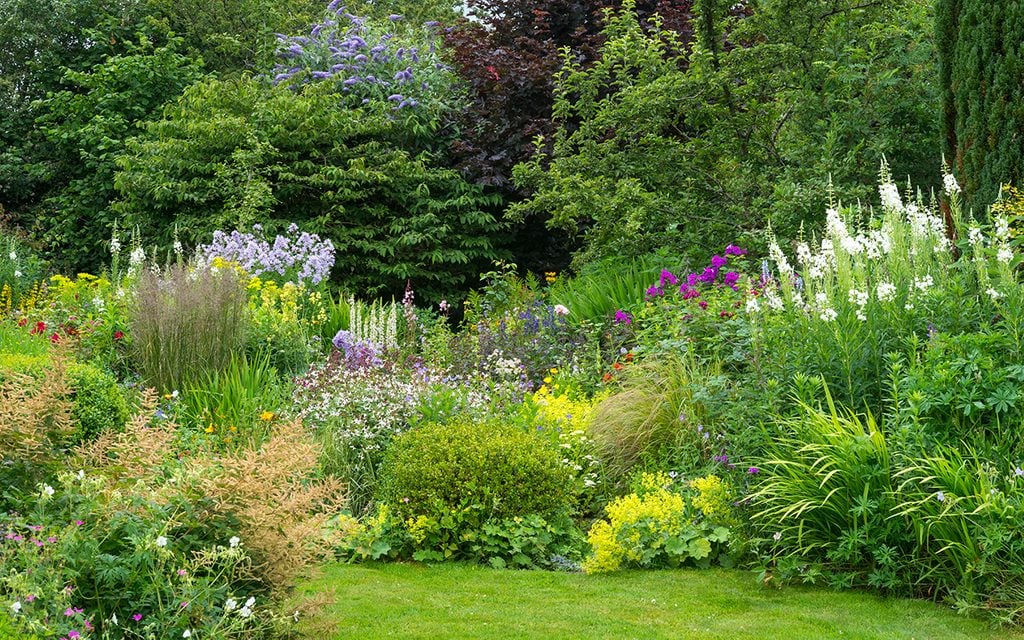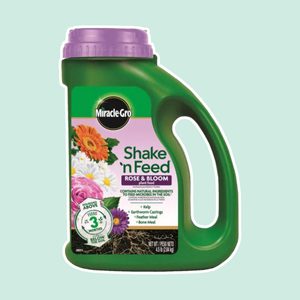7 Gardening Mistakes You Might Be Making with Your Perennial Plants
Updated: May 13, 2021

Your flower beds aren't living up to that gardening magazine ideal? You may be making one of these common perennial garden mistakes.
If you find your perennial vines and plants are not growing in the way you thought they would, you’re not alone. There are a few mistakes that people often make with their perennial garden. The good news? You can fix them.
Gardening tip: Perennials are plants that grow back each spring, as opposed to annuals that typically grow for one season.
Mistake #1: Not planting for your conditions
Columbine thrives in rich, moist soil, but will languish in hot, dry spots. Ferns like partial shade, while echinacea need full sun. Different perennials have different needs, and it’s important to know the amount of sun and the soil conditions in your yard before planting. Read plant tags closely to learn what they need for optimal growth and blooms.
For plants already in the ground, amend poor soil with compost or other organic matter. If you find your plants need more or less light, try to provide shade cover or transplant them as early in the season as possible. Then check out the secret kitchen ingredients that can help your garden grow. You won’t believe what a little baking soda can do.
Mistake #2: Not planting with height in mind
One of the hallmarks of a beautiful garden is a layering of different sized plants—but no one will see your pretty stonecrops if they’re hidden behind taller perennials. When designing a garden, know the heights that your perennials will reach. Then plant smaller perennials, like hens and chicks or huechera, in the front of your garden and along edges. Place taller perennials like echinacea, phlox and delphinium behind.
Mistake #3: Choosing perennial plants that all bloom at once
This is an easy mistake to make when you’re thinking only about the beautiful flowers and not how long they’ll bloom. One month? Two? All summer long? Choose a mix of perennials that together will bloom over the whole season. As early bloomers go by, a new round of color and texture should pop up to take their place. In the meantime, plant a few annuals in your garden to provide color in areas where perennial blooming has ended.
Mistake #4: Crowding your perennials
The size of your plant when you buy it is one thing. The size it will be when fully grown is quite another! “It’s important to know how wide plants will become at maturity so you can give them the space they need to grow and thrive,” says Emily Murphy, founder of Pass the Pistil and Fiskars garden expert. “Check your plant tags for width and height, and place taller plants toward the back or north of your planting area to optimize sun exposure. When considering width, if a plant reaches two feet wide at maturity, for instance, measure from the center of your plant out to be sure it’s not crowding another nearby plant.”
Murphy recommends using your trowel as an informal measuring device before digging a planting hole. This ergonomic garden trowel has convenient measurements to help with plant placement.
Mistake #5: Not managing weeds
To save time (and your back), weed your planting area before planting your perennial garden. Left unchecked, weeds will make your garden beds look a mess and compete with your plants for light and water.
It’s also important to pull weeds regularly during the growing season. Murphy points out that with aggressive weeds like like thistle, dandelion and grasses, it’s critical to remove not just the plant but the roots as well. She recommends the Fiskars Xact Weeder to remove deep-rooted weeds without disturbing the surrounding plants.
Mistake #6: Deciding not to deadhead
It’s a task that’s easy to skip, but your perennials really benefit from deadheading, or clipping the faded and spent flowers from your plants. It helps with the curbside appeal by keeping your garden looking tidy and healthy. Removing the spent flower heads also redirects the plant’s energy into new growth, rather than seed production. Finally, by preventing seeds from forming, the plants won’t have a chance to scatter seeds across your garden. You get to stay in control of which plants grow where!
How often you need to deadhead depends on the perennial. Some flowers like butterfly bush and coreopsis will need this weekly.
Mistake #7: Not mulching after planting
“The single best investment you can make into your garden after planting is mulching with a coarse compost,” says Murphy. “Compost protects the soil to help maintain soil moisture and regulate temperature.” Plus a healthy layer of mulch will also help control weeds!
Looking for perennials to plant? These low-maintenance perennials will help your garden shine.



